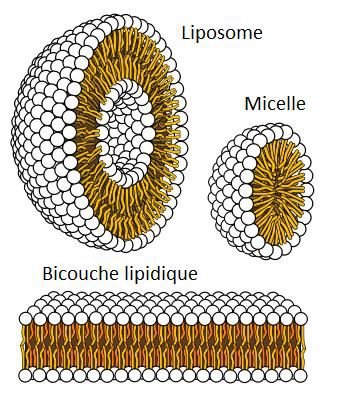-
 SOFIA
SOFIA
-
 XMP
XMP
-
 Host
Host
-
 Restriction enzymes
Restriction enzymes
-
 Asian brown cloud
Asian brown cloud
-
 Water
Water
-
 Venotonic
Venotonic
-
 Obliquity
Obliquity
-
 Contraception
Contraception
-
 Diabetes
Diabetes
-
 Omega-6
Omega-6
-
 UEPS
UEPS
-
 Earth Summit
Earth Summit
-
 Connex
Connex
-
 Brine
Brine
-
 Whirlpool galaxy
Whirlpool galaxy
-
 Diffraction
Diffraction
-
 Totipotency
Totipotency
-
 Homolysis
Homolysis
-
 Red blood cell
Red blood cell
-
 Rabies
Rabies
-
 Volcano
Volcano
-
 Tripton
Tripton
-
 Clinker
Clinker
-
 Sorosilicates
Sorosilicates
-
 Wigner effect
Wigner effect
-
 Grassy tanne
Grassy tanne
-
 Button cell
Button cell
-
 Filtrate
Filtrate
-
 Cenozoic
Cenozoic
Lipid
Lipids are fats, i.e. hydrophobic or amphipathic molecules (one hydrophobic part and one hydrophilic part).
Features of lipids
Lipids are characterised by the fact that they are insoluble in water and, conversely, are soluble in non-polar organic solvents.
Diversity of lipids
There are eight varieties of lipids according to the UPAC classification:
- fatty acids (including omega-3);
- acylglycerols (or glycerides, including triglycerides) ;
- phosphoacylglycerols (or phosphoglycerides;
- sphingolipids ;
- sterols (including cholesterol) ;
- prenols;
- polyketides ;
- saccharolipids (or glycolipids).
Role of lipids
Waxes and vegetable oils are formed from lipids. Lipids in the diet provide the largest number of calories (9.3 kilocalories per gram).
Lipids carry out a wide range of biological functions including:
 The amphiphatic side of lipids pushes them to bind to each other so they avoid contact with water. The hydrophilic parts (in white) remain in contact with water, whereas the hydrophobic parts (in yellow) remain bound. This effect leads to the formation of liposomes, micelles, or the lipid bilayer (of cell membranes). © Public domain
The amphiphatic side of lipids pushes them to bind to each other so they avoid contact with water. The hydrophilic parts (in white) remain in contact with water, whereas the hydrophobic parts (in yellow) remain bound. This effect leads to the formation of liposomes, micelles, or the lipid bilayer (of cell membranes). © Public domain
Latest
Fill out my online form.



